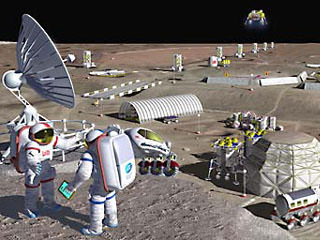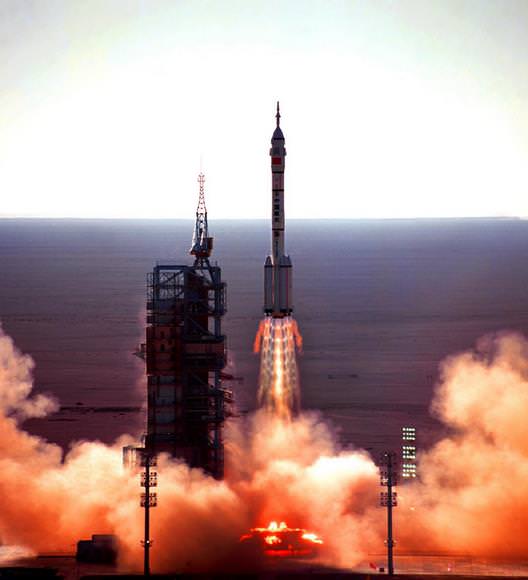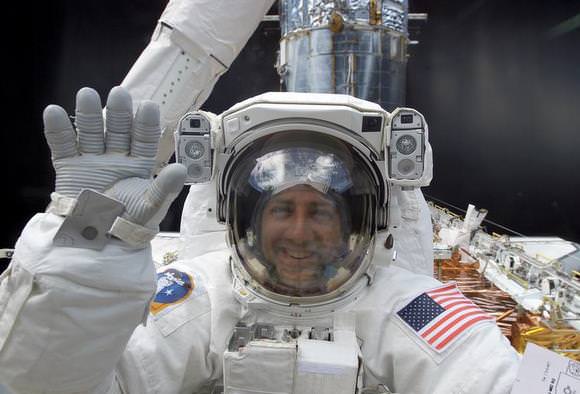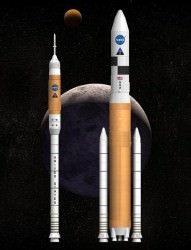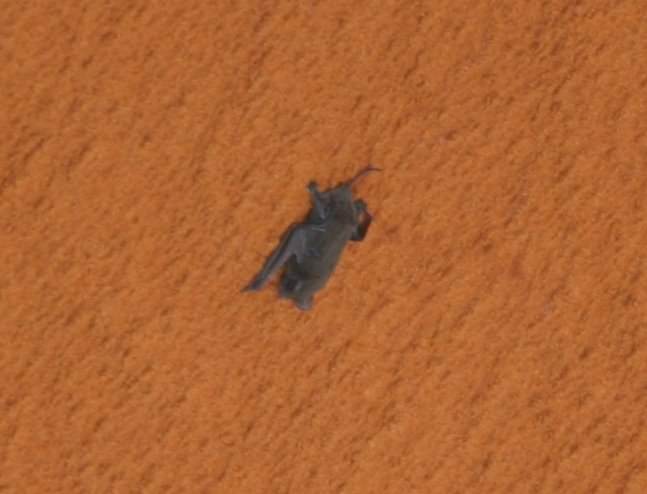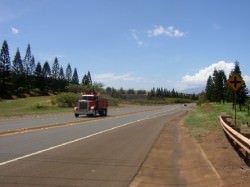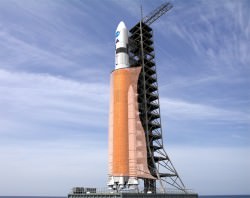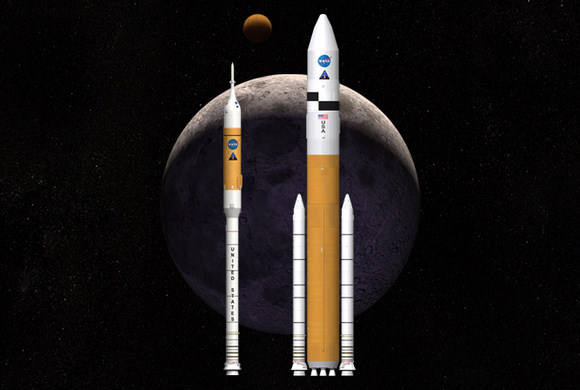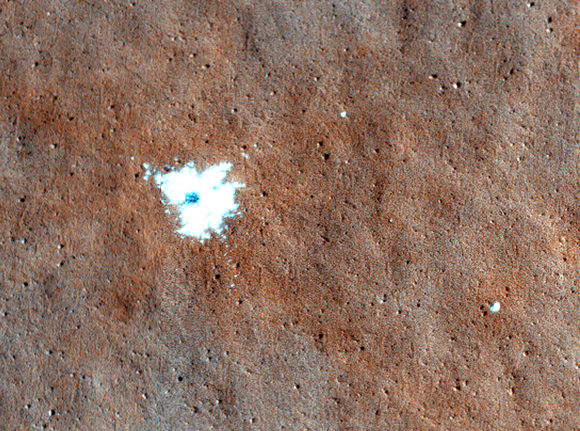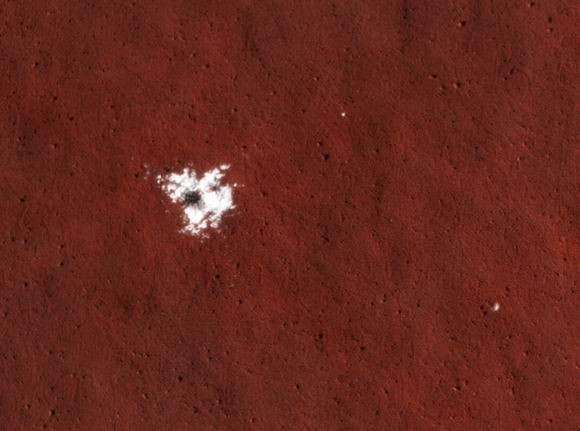48 years ago today, the US launched their first human to space. Alan Shepard flew on Mercury 3, a suborbital mission with a duration of only 15 minutes and 28 seconds. Shepard’s ship, Freedom 7, reached an altitude of 116.5 statute miles (186.4 km) and flew a distance of 303 statute miles (485 km). Enjoy this great video, which includes original footage, as well as Alan B Shephard talking about the flight. He also gives the real story about the “request to relieve himself” which was made famous in the movie “The Right Stuff.” Alan Shepard also flew on Apollo 14 (and made the famous golf shot on the moon.) He passed away in 1998.
Continue reading “Alan Shepard, Freedom 7: May 5, 1961”
NASA Begins Job Layoffs As Shuttle Retirement Looms
[/caption]
NASA began the first round of job layoffs today as the space agency prepares to retire its fleet of space shuttles. 160 people were notified today their jobs were being cut, the first of 900 jobs that will evaporate in the next five months. The first wave of layoffs will affect Lockheed Martin and ATK Thiokol, contractors that support the shuttle program building fuel tanks and rocket boosters in Louisiana and Utah. The shuttle program employs about 1,600 NASA civil servants across the space agency and 13,800 contractors around the country. Once the shuttle stops flying, as many as 6,500 jobs could be cut at the Kennedy Space Center alone.
NASA announced the first round of layoffs at a briefing Thursday, where they also announced the launch date for the Hubble Telescope repair mission as May 11, a day earlier than previously planned. Making the two divergent announcements at the same news conference was bittersweet.
Officials at the briefing stressed that without an infusion of money in 2010 — for which a detailed budget is expected to be released next week — they had no choice but to continue the gradual shutdown of shuttle operations.
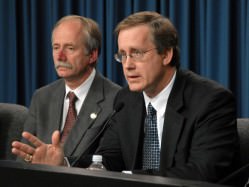
Shuttle program manager John Shannon said several hundred jobs will be lost to attrition and some employees will transfer to other contractors or projects. The rest will be layoffs.
“Only if we were directed to fly additional missions would we halt that activity,” Shannon said.
Bill Gerstenmaier, associate administrator for space operations, said that if $2.5 billion proposed recently by Congress budget planners materialized, it could allow a few shuttles to fly past the 2010 retirement date if some shuttle flights got delayed and NASA were unable to complete the construction of the international space station.
He added that, although the shuttle program’s plans were clear, it was less certain how quickly jobs would ramp up for the shuttle’s replacement, the Ares I rocket and Orion capsule.
The first launch of Ares I and Orion is planned for March 2015, but that date is not certain.
Source: Orlando Sentinel
The NASA Buzz: Shuttle Extension, Abandoning the Moon, and What About an Administrator?
[/caption]
The blogosphere and Twitterverse has been buzzing the past couple of days with NASA what-ifs and possibilities. But that usually happens whenever there are Congressional hearings about our favorite space agency. Here’s the run-down of what is really happening: No extra money has been given to extend the shuttle program as of yet but it is a possibility. NASA is not going to abandon going to the Moon. And no, President Obama hasn’t named a new NASA administrator yet. Want the details?
House and Senate leaders have agreed to authorize $2.5 billion to keep the U.S. space shuttle fleet flying through 2011. While no money has actually been appropriated for that yet, the extension would happen only if necessary to complete currently planned missions to the international space station. If another flight were added to the shuttle manifest, it’s possible the controversial Alpha Magnetic Spectrometer instrument would be brought to the station. AMS was mothballed after the Columbia accident in 2003 as a cost cutting move, but the because of the international scientific community’s outcry about cutting the one really exciting science experiment to fly on the space station (that was mostly paid for by other countries) last year Congress told NASA to reconsider. They are supposed to make a decision today.
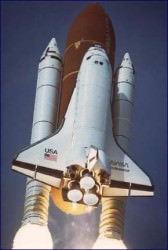
But the shuttle retirement is controversial from a political point of view because it affects thousands of aerospace industry jobs, not only in Florida, but nationwide. Retiring the shuttle in 2010 would also give a five year gap (at least) until the Orion crew vehicle is ready to fly, making the US dependant on Russia for bringing humans and supplies to the ISS. This week House and Senate budget conferees agreed on “the strategic importance of uninterrupted human access to space” and said the extra $2.5 billion is provided “in anticipation that the funding is needed” to safely “complete the construction and equipping” of the space station.
But some NASA officials and contractors worry that giving more funding to the shuttle program would hamper the efforts for the Constellation program, funneling money away from the new rocket that will help return humans to the moon, hopefully by 2020. The Constellation program has already begun shifting gears and figuring out how to make flying by 2015 actually work. Ian reported last week that the Orion crew size would likely be decreased from six to four, which also makes the spacecraft lighter. One issue engineers have been facing has been excess weight. Other reports look like this is likely a done deal.
Speaking of returning to the Moon, Wednesday’s appropriation hearings created some buzz when Chris Scolese, the agency’s acting administrator, said he anticipates changes. Some reports said Scolese gave vague answers. Others had NASA abandoning the a base on the Moon, but that is likely an exaggeration.
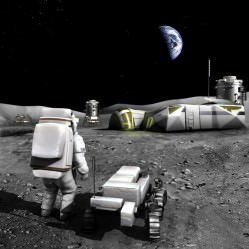
“I just can’t tell you what those changes would be,” Scolese told members of the House Appropriations Subcommittee on Commerce, Justice, Science and Related Agencies. “We’re still looking at options for what do we mean by the moon. Do we mean a colony on the moon? That’s clearly very expensive. Are we looking at something along the lines of what we did with Apollo?” he said.
But that correlates completely with legislation passed in October, 2008 that says:
“As NASA works toward the establishment of a lunar outpost, NASA shall make no plans that would require a lunar outpost to be occupied to maintain its viability. Any such outpost shall be operable as a human-tended facility capable of remote or autonomous operation for extended periods.”
Scolese also pointed out that the budget overview released earlier this year by President Obama clearly backs the previous administration’s goal of sending astronauts to the moon by 2020, a decade after the scheduled retirement of the shuttle fleet.
“It will probably be less than an outpost on the moon, but where it fits between sorties — single trips to the moon to various parts — and an outpost is really going to be dependent on the studies that we’re going to be doing,” he said.
What will really end up happening on the Moon is likely to change over time, just as the Constellation program already appears to be changing.
And finally, the current administration has yet to name a new NASA administrator. One person whose name had been floating around recently, General Lester Lyles, withdrew himself from consideration Wednesday. Another name that has surfaced is Lori Garver, former NASA associate administrator who headed Obama’s space transition team.
Sources: Florida Today, Lunar Network Blog, MSNBC, Wall Street Journal
Will US Astronauts Ride Chinese Rockets?
[/caption]
The White House is reviewing possible options where NASA astronauts could catch rides to the International Space Station on Chinese rockets, according to an article in the Huntsville (Alabama) Times. The Times quoted President Barack Obama’s new science adviser, John Holdren, in an interview last week that using the Chinese National Space Agency’s Shenzhou spacecraft “should not be ruled out” during the interim between the retirement of the space shuttles and when the new Ares rocket and Orion capsule are ready to go. NASA’s plans are to rely on Russian Soyuz rockets from 2010, the planned shuttle retirement, to 2015, the tentatively scheduled first manned mission of Ares. Other options are possible commercial ferry flights to the International Space Station from the winners of the COTS (Commercial Orbital Transportation Services) contracts. But could China be in the mix, as well?
NASA has been paying the Russian space agency $21.8 million per passenger for flights on the Soyuz, and that cost will likely rise. Some space experts says that agreements, and even an eventual partnership with the Chinese, could keep prices lower, as well as and establish diplomatic ties to the nation. Victoria Samson, a space and defense expert with the Colorado-based Secure World Foundation was quoted by the Huntsville Times, “It’s a great idea to reach out to China. (NASA) is looking at a lot of options because the ones they have aren’t working well. The Russians are working on a follow-up to the Soyuz, and complications like this can keep everyone in line.”
Former NASA astronaut LeRoy Chaio wrote last year as a guest blogger on Discovery.com/Space that cooperating with China “certainly makes sense. Space is a good place to start a policy shift, as the United States showed with Russia in the early 1990s… China is emerging as a true world power, both economically and technologically. … It is important to take the global view because isolationism has long been obsolete. The U.S. should find mutually beneficial areas such as space to cooperate in, and turn our Chinese adversary into a friend.”
But if NASA wants to extend a cooperative hand to China’s space agency, it might encounter political as well as technical roadblocks. Laws such as the ITAR (International Traffic in Arms Regulation) trade laws have barred some transfer of technology to China, and would have to be amended to hand over the information China would need to modify its Shenzhou vehicle to dock with the ISS. China would also have to be able to produce more of the spacecraft than it currently does.
Sources: Huntsville Times, Discovery Space
Interview with Astronaut Mike Massimino on the Hubble Servicing Mission, Viewing Earth from Space and … Twitter?
The long-awaited final Hubble servicing mission is a month out now, and the crew of seven astronauts who have been in limbo since at least October are finally gearing up to go. The space shuttle Atlantis is set to launch from NASA’s Kennedy Space Center in Florida on May 12.
This will be the second Hubble mission for Astronaut Mike Massimino, and he’s been sharing his excitement about the mission via live interviews from NASA’s Johnson Space Flight Center and Twitter, a popular social networking site. We took advantage of the chance to ask Massimino some questions.
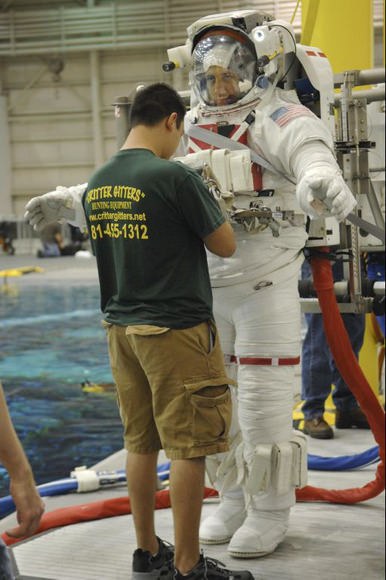
So the final Hubble servicing mission is finally going to happen. How are you feeling about it?
I’m feeling great. I’m ready, I think my crew’s ready, and looking forward to going into space and seeing Hubble again and seeing the Earth from space.
On Twitter, you “tweeted” a few days ago: “viewing the Earth from space is the most beautiful site, words cannot describe the experience, can’t wait to see that sight again!” And it made me wonder how long you’ve wanted to have that perspective, and whether you dreamed of this sort of thing as a kid?
I dreamt about being an astronaut when I was a little kid. I was 6 years old when Neil Armstrong first walked on the moon. But the view of the Earth … it is just so awesome to see the Earth from space. There’s no way to really prepare you for it; we can practice our space walks in the neutral buoyancy lab, we can go to simulators, but there’s nothing that can prepare you for what your eyes will actually see when it comes to the beauty of space and the beauty of the Earth. I can’t really describe it with words, but I can describe what my thoughts were. When I really had the chance to look, while I was spacewalking, the first thought that went through my mind was “if you were in Heaven, this is what you would see.” And then the thought that replaced it was “no, no, it’s more beautiful than that. This is what Heaven must look like.”
You performed two spacewalks to service the telescope during the STS-109 mission in 2002. Since then you’ve worked in Mission Control and taught some classes. Why so long between missions?
I flew in 2002, then I was hoping to get reassigned to another shuttle flight at some point, but the Columbia accident occurred. In the three years following Columbia, we didn’t have very many flights. I got assigned soon after STS 121 to the Hubble Space Telescope flight. Then comes that saga. My crew and I were assigned around Halloween, October 2006 … We thought we might be flying about a year and a half later. We were two weeks from launching in October of last year, and then we got delayed because something broke on the telescope. It’s been good for job security I guess. It gives you more time to get ready, and they hang onto you a little bit longer.
Have you noticed any differences between preparing for this mission and preparing for the STS-109 flight?
STS-109 was my first flight. I was trying to figure out what I was going to do not to get in everybody’s way. I was wondering how I would react to space; I was kind of concerned about how I was going to do. This flight here, I’m pretty confident about how I’ll do … and I’m concerned a little bit more about how the team will do. It’s … a little more responsibility. I’m the experienced guy on our spacewalking team now. Actually it’s a little bit more enjoyable because I know what I’m going to do and I’m looking forward to it.
You’re on Twitter! Why?
I feel very fortunate to have the opportunity to be an astronaut. I think I’m extremely lucky. We get to do so many wonderful things; one of my interests has been to try to share that with people the best I can. It seemed like this Twitter idea was a great way to share our experiences with other people. One of the great things about Twitter it doesn’t really take that long. You have 140 characters … I checked this weekend and we were up to 35,000 people–
You’re up to 40,000 now
… I figure if there are that many people listening, that’s a pretty good deal. You get responses to it. It’s just wonderful to hear the excitement and all the good wishes from people around the world.
***
The May servicing mission will be the fourth and final trip to the Hubble Space Telescope. Over the course of five spacewalks, astronauts will install two new instruments, repair two inactive instruments and replace parts that will keep the telescope functioning at least into 2014.
Check out Mike Massimino’s Twitter profile here, where he’ll continue tweeting about mission preparations. More information about the servicing mission is here, and more information about the Atlantis crew is here.


